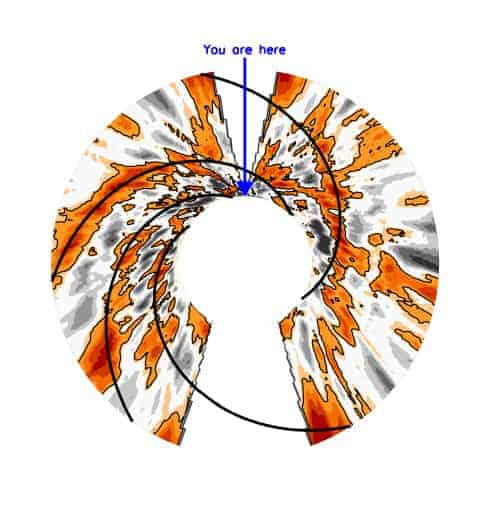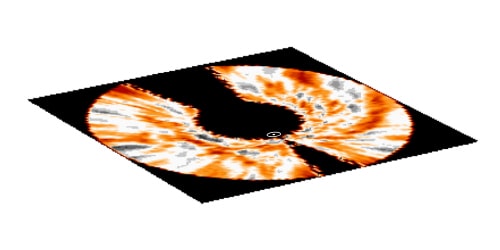Astronomers have made the most detailed map ever of our galaxy's overall shape, showing that its spiral arms extend much further than expected. Evan Levine, Leo Blitz and Carl Heiles of the University of California at Berkeley analysed the distribution of atomic hydrogen in the Milky Way at radio wavelengths to reveal hitherto unseen features of our galactic backyard. The map shows that our galaxy's spiral structure is not symmetrical around its centre but contains more arms in some areas than others. Contrary to theoretical predictions, the arms also continue well beyond the distance at which stars should be found (Sciencexpress 1128455).

Although we know that the Milky Way is a spiral galaxy, its precise shape is difficult to determine because the Sun is imbedded in the galactic disk. This renders optical methods ineffective at distances larger than a few tens of thousands of light years due to the absorption of light by dust. Electromagnetic radiation at radio wavelengths, however, is not affected by this absorption and can therefore allow astronomers to “see” through the disk. Such radiation is emitted in the hyperfine atomic transitions of hydrogen atoms, which are distributed throughout the galaxy and therefore enable researchers to trace the Milky Way’s structure.
Levine and colleagues took previously obtained data from the hydrogen “21-cm emission lines” and applied a technique called unsharp masking to increase the contrast between high and low signal regions. They found that the spiral arms reach out as far as 25 kpc, or 80,000 light-years, away from the centre of the galaxy.
“We have been able to trace the spiral structure of the entire disk of gas beyond the orbit of the Sun around the Galactic Center to the edge of the disk,” explains Blitz. “This gives the clearest and most complete picture of the spiral structure of the disk so far, and shows that the spiral structure continues well beyond the radius at which we expect stars to be. This is not expected from theory, and will require a deeper understanding of the origin of spiral structure.”
The trio also found that the gas in the spiral arms is thinner than that outside the arms — something that had been expected but never actually observed. This important finding, says Levine, will have implications for spiral density wave theory, which explains how spiral arms change over time.
The sharpened map of the galaxy also raises new questions, such as how gravity affects the spiral structure in galaxies. The spiral pattern in the Milky Way is like most other “grand design” spirals in that it is approximately logarithmic, or shaped like a cyclone. Scientists believe that the spiral structure is driven by the gravity of the disk. “But we are seeing spiral structure even where gravity seems to be too weak to drive it. Why? How?” asks Blitz.




